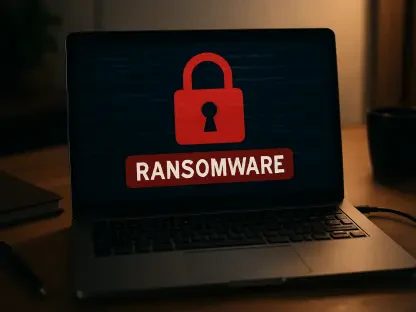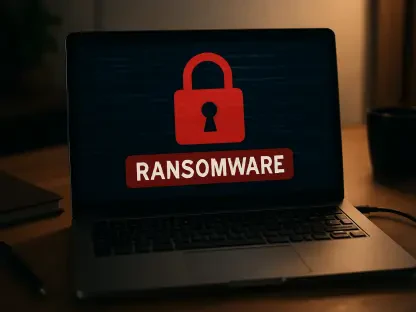Navigating the complex landscape of digital security compliance within the UK and EU can be challenging for organizations. With recent and ongoing regulations, understanding and meeting governance and compliance obligations is crucial for maintaining security and avoiding penalties. The evolving regulatory landscape includes several significant directives and acts that require comprehensive documentation and proactive measures.
Understanding the Evolving Regulatory Landscape
GDPR and Its Impact
The General Data Protection Regulation (GDPR), which set the foundation for information security compliance within the UK and EU, introduced stringent reporting and governance obligations for organizations. GDPR emphasizes the importance of documenting broader information security protocols, allowing organizations some discretion in this regard. It necessitates not only the protection of personal data but also the implementation of robust data management practices. This regulation has had a profound impact, compelling organizations to reevaluate their data handling processes to ensure compliance. The significance of GDPR lies in its broad scope, affecting all entities that process personal data of EU residents, regardless of the company’s location.
Given GDPR’s emphasis on transparency, accountability, and data protection, organizations were forced to adapt to comprehensive documentation, creating a robust framework for personal data governance. Compliance involves continuous monitoring, reporting, and updating security measures to maintain the integrity and confidentiality of sensitive information. As the landscape of digital security continues to evolve, the foundations laid by GDPR remain crucial to shaping future legislative requirements, guiding organizations in their quest for compliance and data protection.
The Emergence of NIS2 and CER
The NIS2 Directive is broadening the scope of compliance by redefining what constitutes a critical sector. As a result, more organizations find themselves subject to stringent security requirements. NIS2 extends beyond the original NIS Directive, incorporating new sectors and enhancing measures that ensure a higher level of cyber resilience. This expanded definition includes critical sectors such as energy, transport, health, and water, amongst others, making it imperative for a larger number of entities to comply. The directive emphasizes the importance of cybersecurity policies and incident reporting, mandating a more robust and coordinated approach to managing and mitigating cyber risks.
The Critical Entities Resilience Act (CER) further reinforces the need for robust governance by mandating regular reporting and collaboration between authorities and critical entities. CER aims to enhance the resilience of critical entities against a variety of threats, including natural disasters and cyber-attacks, by ensuring they adopt comprehensive risk management practices. Collaboration is central to CER, requiring entities to coordinate with national authorities to develop and maintain effective resilience strategies. This collaborative effort ensures that critical sectors are better prepared to handle disruptions, thereby safeguarding both European markets and civil society from potential harms.
Sector-Specific Regulations
DORA’s Focus on the Financial Sector
The Digital Operational Resilience Act (DORA) targets financial sector organizations with specific technical requirements and governance obligations. DORA aims to solidify the operational resilience of financial entities, ensuring they can withstand and recover from various disruptions, including cyber threats. The regulation introduces strict reporting mechanisms, which significantly increase the compliance burden for financial institutions. These entities must maintain comprehensive documentation, implement stringent security measures, and regularly test their operational resilience strategies. DORA’s focus is on ensuring that financial services continue to operate smoothly, even in the face of severe cyber incidents.
Financial institutions are required to align their frameworks with the principles laid out by DORA, encompassing technical standards, risk management processes, and incident response protocols. Compliance with DORA necessitates a proactive approach, involving continuous monitoring, detailed reporting, and periodic reviews to ensure that cybersecurity measures are up-to-date and effective. By targeting the financial sector, DORA underscores the critical nature of maintaining operational integrity in an increasingly digital landscape, highlighting the importance of resilience in safeguarding financial stability.
The Cyber Resilience Act (CRA) and Product Security
The Cyber Resilience Act (CRA) addresses products with digital elements, imposing certification and reporting obligations across the supply chain. This regulation targets manufacturers, importers, and distributors, ensuring that products meet high standards of cybersecurity before they reach the market. CRA aims to mitigate risks associated with digital products, including software and hardware vulnerabilities that could be exploited by malicious actors. Certification processes under CRA require thorough testing and validation of cybersecurity measures, ensuring that products are secure and reliable for consumers.
In addition to CRA, organizations in the UK must comply with the Product Security and Telecommunications Infrastructure Act (PSTIA), governing security for consumer connectable devices. PSTIA mandates stringent security requirements for devices that can connect to the internet, protecting consumers from cyber threats and ensuring that products and services are resilient against potential attacks. Compliance with PSTIA involves implementing robust security measures, conducting thorough testing, and maintaining continuous oversight to ensure that devices remain secure throughout their lifecycle. This dual regulatory framework highlights the importance of cybersecurity in product development and distribution, emphasizing a comprehensive approach to safeguarding digital assets.
Comprehensive Compliance Strategies
Meeting Multiple Regulatory Regimes
Organizations might need to comply with several regulatory measures simultaneously, creating a complex compliance landscape. Large, multi-sector entities face the challenge of navigating overlapping regulations, which requires a strategic approach to identify and meet various obligations. To effectively manage this complexity, organizations must develop tailored compliance strategies that address specific requirements of each regulation while ensuring overall cybersecurity integrity. This involves rigorous planning, detailed documentation, and ongoing monitoring to maintain compliance across multiple regimes.
Having a clear understanding of each regulation’s unique demands is crucial for developing effective compliance frameworks. Organizations should prioritize comprehensive risk assessments, identifying potential vulnerabilities and implementing appropriate security measures. Moreover, leveraging technology and automation can enhance the efficiency of compliance processes, facilitating seamless integration across different regulatory areas. By adopting a proactive and structured approach, organizations can navigate the intricate landscape of digital security compliance, safeguarding their operations and ensuring adherence to all applicable regulations.
Developing Robust Policies
Creating well-documented and structured information security policies is essential for maintaining compliance with various regulations. These policies may either be separate documents, addressing specific aspects of each regulation, or integrated into a single comprehensive governance document. The decision on which approach to adopt should consider factors like available resources, the specialization of compliance teams, and existing governance structures. Separate policies allow for focused compliance efforts, ensuring that each regulation’s unique requirements are met. However, integrated documents provide a holistic view of an organization’s security practices, promoting consistency and coherence across all areas.
Developing robust policies involves a thorough understanding of regulatory requirements, precise documentation, and continuous updates to reflect changes in the legislative landscape. Organizations should engage stakeholders at all levels, ensuring that policies are practical, actionable, and aligned with business objectives. Regular training and awareness programs are vital in promoting a security-conscious culture, reinforcing the importance of adherence to documented procedures. By establishing clear, comprehensive, and regularly updated information security policies, organizations can effectively mitigate risks, enhance operational resilience, and ensure compliance with multiple regulatory regimes.
Types of Governance Documentation
Tailored Policies
The NIS2/DORA/GDPR Policy: This document is tailored to meet the specific legislative requirements without detailing response measures. It focuses on ensuring compliance with the reporting and governance obligations stipulated by NIS2, DORA, and GDPR. This policy outlines the frameworks for data protection, incident reporting, and operational resilience, providing a clear roadmap for organizations to navigate these regulations effectively. By tailoring the document to specific legislative demands, organizations can ensure targeted compliance, addressing unique aspects of each regulation.
The Information Security Policy: This policy focuses on outlining technical security measures and adherence to standards without explicit legislative references. It encompasses comprehensive cybersecurity practices, including risk management, access control, data encryption, and regular vulnerability assessments. The information security policy serves as a foundational document, guiding organizations in implementing robust technical measures to safeguard digital assets. While it may not explicitly reference legislative regimes, it aligns with best practices and industry standards, providing a solid framework for maintaining cybersecurity integrity.
Practical Response Documents
The Incident Response Procedure: This document details actionable steps, role designations, and timelines for handling security incidents. It provides a structured approach to managing and mitigating cyber threats, outlining clear procedures for identifying, reporting, and resolving incidents. The incident response procedure designates specific roles and responsibilities, ensuring that all team members are aware of their duties during a security breach. Timelines and protocols for communication, investigation, and resolution are crucial elements, facilitating an organized and efficient response to incidents.
The ‘One-Size-Fits-All’ Policy: This hybrid approach combines overall policy commitments with specific compliance efforts and an incident response plan. It integrates various elements of digital security governance into a single document, providing a comprehensive view of an organization’s security practices. This policy addresses multiple regulatory requirements, consolidating efforts to ensure consistent and streamlined compliance. By combining policy commitments with practical response measures, organizations can develop a cohesive strategy, enhancing their ability to manage and mitigate cyber risks effectively.
Best Practices for Documentation Management
Defining Purpose and Audience
Clearly defining the document’s intention is crucial for effective compliance. Tailoring it to the audience using clear, simple language enhances understanding and implementation. This involves identifying the primary stakeholders, understanding their needs, and ensuring that the documentation is accessible and comprehensible. Effective communication is vital in promoting adherence to documented procedures, fostering a security-conscious culture within the organization.
Developing user-friendly documentation requires a thorough understanding of the regulatory landscape, precise articulation of requirements, and practical guidance for implementation. By defining the purpose and audience of each document, organizations can enhance the relevance and effectiveness of their compliance efforts, ensuring that all team members are aware of their roles and responsibilities.
Staying Workable and Updated
Ensuring that documented procedures remain practical through thorough preparation and regular review is integral to robust compliance. Regularly testing policies and procedures ensures continued relevance and effectiveness. This involves conducting periodic assessments, monitoring compliance performance, and updating documentation to reflect changes in the regulatory environment. Continuous improvement is key to maintaining robust security practices, adapting to emerging threats, and enhancing operational resilience.
Organizations should establish processes for regular reviews, involving stakeholders at all levels to ensure that documentation remains practical and effective. Engaging external experts can provide valuable insights into regulatory compliance, offering guidance on best practices and emerging trends. By staying updated and practical, organizations can navigate the complex landscape of digital security compliance, safeguarding their operations and ensuring adherence to all applicable regulations.
Operationalizing Policies and Procedures
Scope, Updates, and Incident Reporting
Defining the scope and audience of each document, managing updates and sign-offs, and streamlining incident reporting procedures contribute to effective compliance practices. Clearly delineating the scope ensures that documentation addresses relevant regulatory requirements, and identifying the audience facilitates targeted communication and implementation. Managing updates involves establishing processes for periodic reviews, ensuring that documentation reflects changes in the regulatory landscape and operational practices.
Streamlining incident reporting procedures is crucial for effective compliance, involving clear protocols for identifying, reporting, and resolving security incidents. This requires a structured approach, designating specific roles and responsibilities, and maintaining timelines for communication and resolution. Regular testing and review of incident reporting protocols are essential to ensure that procedures remain effective and practical. By defining the scope, managing updates, and streamlining reporting processes, organizations can enhance their ability to navigate the complex regulatory landscape of digital security compliance.
Engaging External Expertise
Navigating the intricate landscape of digital security compliance in the UK and EU is a challenge for many organizations. With the introduction of new regulations and the ongoing updates to existing ones, it’s essential to stay informed about governance and compliance requirements. These regulations are critical for ensuring security and avoiding potential penalties.
The regulatory environment is dynamic and constantly evolving, featuring several significant directives and acts that organizations must adhere to. This includes maintaining thorough documentation and implementing proactive measures to comply with these regulations.
One of the key aspects of staying compliant is understanding the specific requirements of various regulations, such as GDPR in the EU or the UK Data Protection Act. Each regulation has its own set of guidelines and standards that must be met, requiring organizations to regularly review and update their security practices.
By staying vigilant and proactive, organizations can enhance their security posture and ensure they are in line with the latest regulatory requirements. This not only protects sensitive data but also builds trust with customers and stakeholders. In conclusion, navigating digital security compliance is an ongoing process that necessitates diligence, comprehensive documentation, and a proactive approach to meet governance and compliance obligations effectively.









